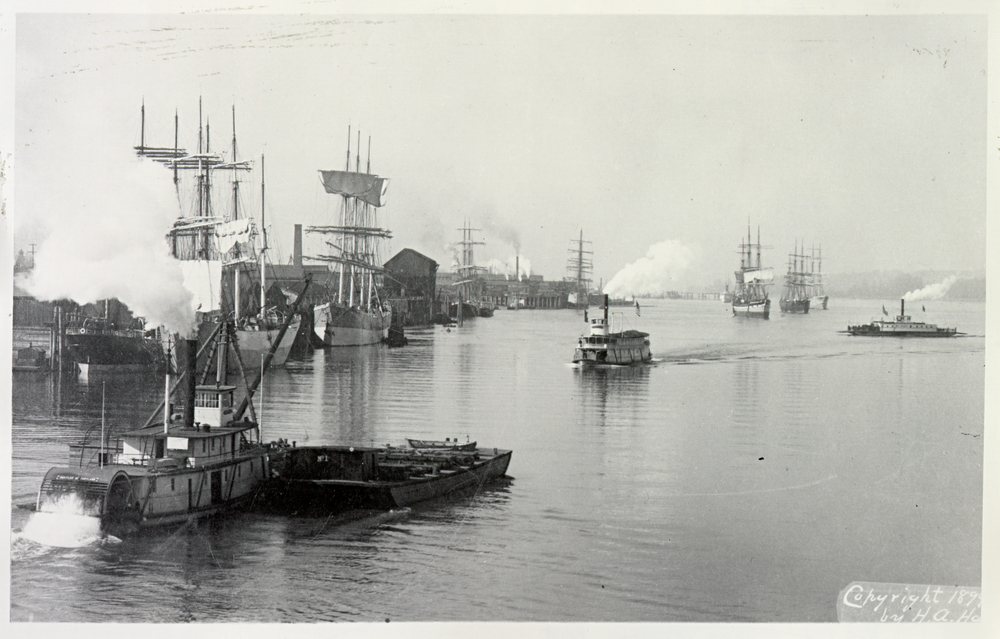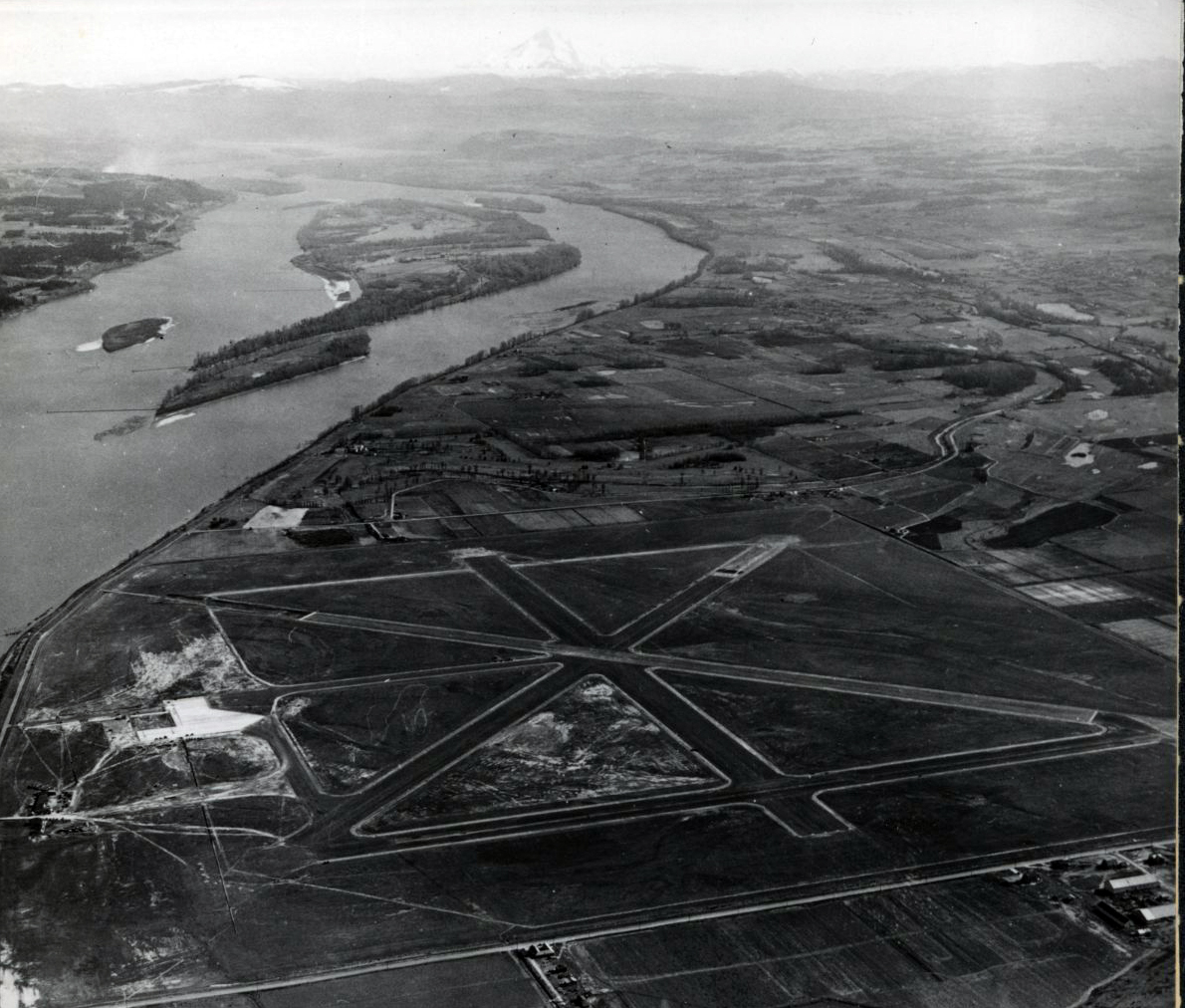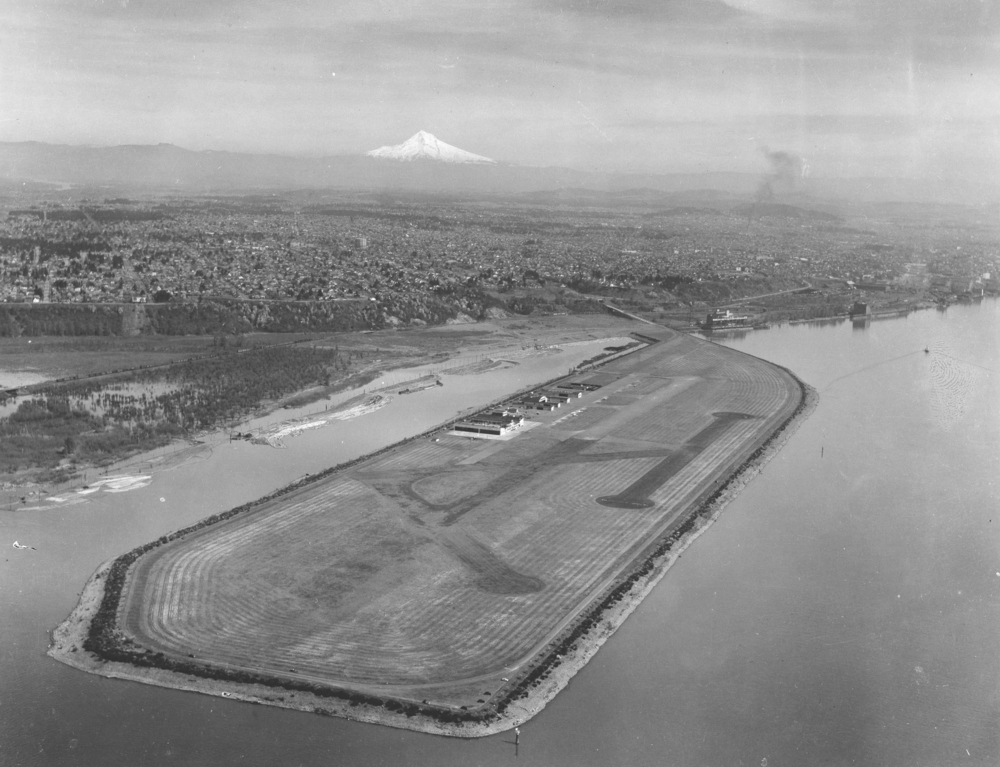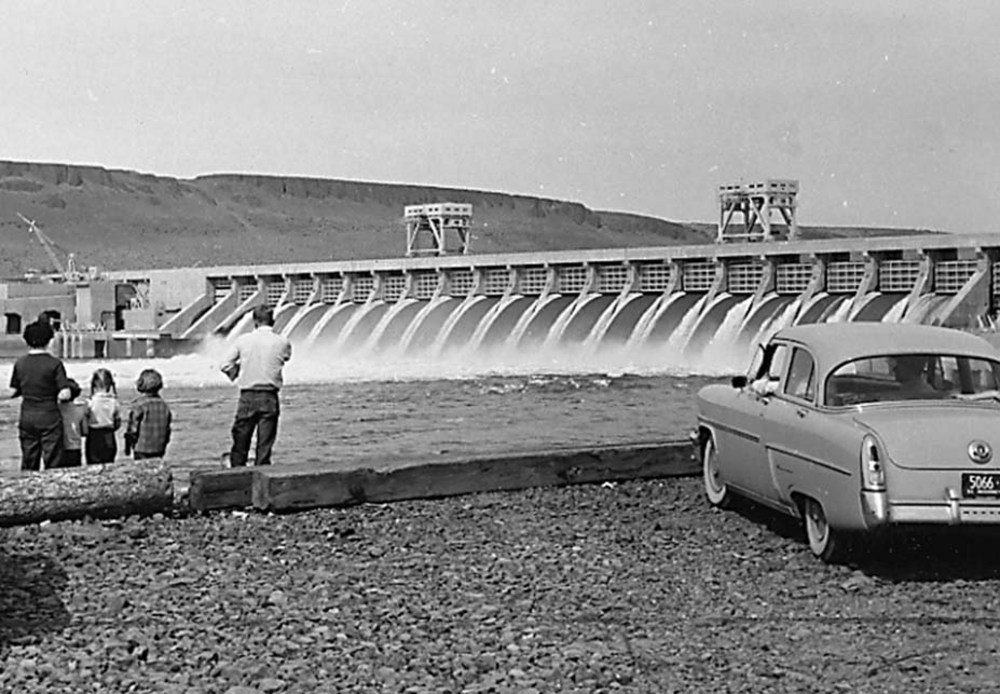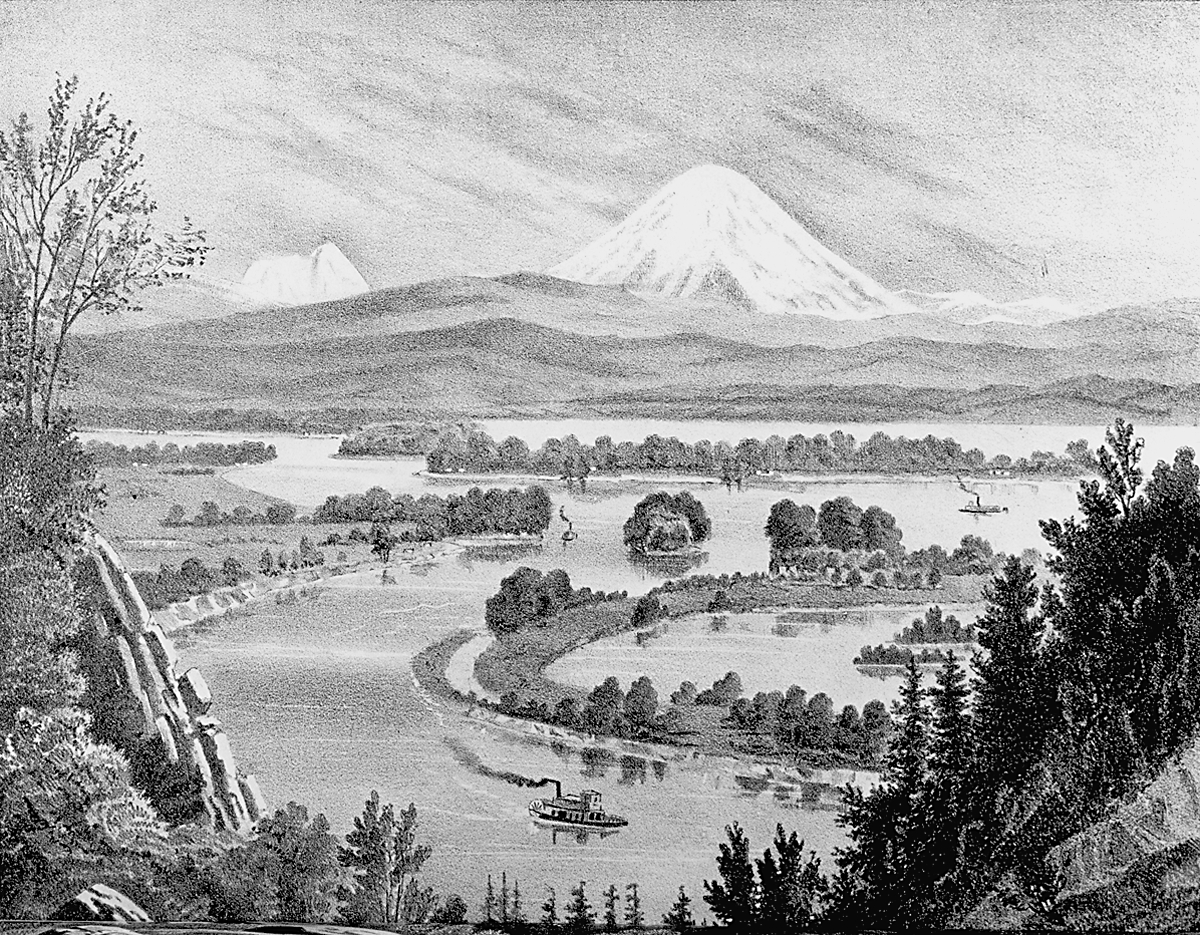The Oregon Legislature created the current Port of Portland in 1970 by merging the original Port of Portland, a public corporation dating from 1891, and the Portland Commission of Public Docks, a city agency dating from 1910. In 1973, the consolidated Port became a tricounty agency serving Multnomah, Clackamas, and Washington counties.
The Port functions under the direction of seven commissioners appointed by the governor and confirmed by the legislature. Its three areas of activity are aviation, maritime trade, and land development. It operates the Portland International Airport and maintains three marine terminals on the Willamette River (T-2, T-4, and T-5) and one on the Columbia (T-6). The Port is also the developer of several industrial parks, including Rivergate, Swan Island, Troutdale, and Portland International Center.
The Port of Portland in the twenty-first century plays a crucial role in the economy of the Portland region; but it maintains a relatively quiet public profile, a marked contrast to the early days of its predecessor agencies.
The Oregon legislature established the original Port of Portland in 1891 to construct and permanently maintain a twenty-five-foot ship channel in the Willamette and Columbia rivers "at the cities of Portland, East Portland, Albina, St. Johns, and Linnton and from these cities to the sea." The first board of fifteen commissioners, appointed by the legislature, represented the Portland business elite, with William S. Ladd as the first commission president. After a decade of scandals, Port commissioners were directly elected from 1932 through 1935; since then, they have been appointed by the governor.
The federal Rivers and Harbors Act of 1912 gave the Port sole responsibility for maintaining the Portland harbor to a depth of thirty feet. The act also mandated cooperation between the Port and the U.S. Army Corps of Engineers in maintaining and deepening the navigation channel from Portland to the ocean at Astoria. The two agencies made a powerful combination. Lobbying by the Port in the 1920s, for example, convinced Congress that a new interstate bridge across the Columbia at Longview, Washington—also known as the Lewis & Clark Bridge—be built with a 190-foot clearance to allow for large ships.
During the Progressive Era, many Portlanders worried that railroads and other private corporations held so much waterfront land that Portland's competitive position in shipping via waterways was being damaged. In 1910, the city's voters approved $500,000 to acquire land for public docks. Mayor Joseph Simon, a political boss with obligations to the railroad, vetoed the council ordinance to sell the bonds. In response, voters used the new initiative process to approve $2.5 million and create an independent Commission of Public Docks to break the railroad monopoly. In 1913. the new commission opened Municipal Terminal 1 on the west side of the Willamette at N.W. Front and Upshur, just north of the present-day Fremont Bridge. Next, an east-side terminal was built at the foot of Oak Street across from downtown, followed by a terminal at St. Johns.
In the early 1920s, the Port of Portland took on responsibility for a city airport. It acquired Swan Island in 1921 and received federal permission to shift the channel of the Willamette River from the east side of Swan Island to the west side, attaching the "island" to the east bank and developing the unused area for a municipal airport. Charles Lindbergh inaugurated the new airport by landing on September 14, 1927.
The increasing size of passenger and cargo aircraft, particularly the DC-3, required a larger facility on dredged landfill along the Columbia River. Portland-Columbia Airport opened in October 1940 after four years of construction that used federal public works and work-relief funds.
The Port of Portland became the focus of controversy from the 1920s into the early 1930s. The commissioners and general manager James A. Polhemus were suspected of favoritism in setting dry-dock rates, purchasing and leasing dredges, and similar business decisions. The controversy climaxed on November 20, 1933, when Frank Akin, a private auditor who had been appointed by Governor Julius Meier to investigate the accusations of corruption, was murdered. The murder was never solved, and Port officials successfully fended off the accusations of corruption.
After World War II, Portland's maritime business settled into a long-standing routine of bulk exports (grain, lumber, minerals) and breakbulk imports. By the early 1960s, as Seattle moved aggressively to build facilities for new containerized cargo systems, Portland was relying on traditional trade patterns. Gradually, the Port began to lose ground to West Coast rivals.
Creation of the consolidated Port of Portland was in part a response to the need for more aggressive pursuit of maritime trade. One of the first initiatives in 1974 was to develop the Rivergate industrial park and Terminal 6 for container ships. The confluence of the two rivers had long been in private ownership, essentially as a duck-shooting area, before passing to Willamette University, which sold it to the Port in the 1960s.
Other initiatives included the construction of a huge dry dock at Swan Island in 1979 (sold and then floated to the Atlantic in the 1990s), the expansion of Portland International Airport, and support for deepening the Columbia River channel to forty-three feet.
-
![]()
Portland Harbor, 1899.
Oregon Historical Society ba018579
-
Portland Harbor.
Related Entries
-
![Portland International Airport]()
Portland International Airport
Portland has used two locations for its major commercial airport—Swan I…
-
![Swan Island]()
Swan Island
Swan Island sits about eight miles above the mouth of the Willamette Ri…
-
![U.S. Army Corps of Engineers]()
U.S. Army Corps of Engineers
The U.S. Army Corps of Engineers, a hybrid military and civilian federa…
-
Willamette River
The Willamette River and its extensive drainage basin lie in the greate…
Related Historical Records
Map This on the Oregon History WayFinder
The Oregon History Wayfinder is an interactive map that identifies significant places, people, and events in Oregon history.
Further Reading
Lansing, Jewel. Portland: People, Politics, and Power: 1851-2001. Corvallis: Oregon State University Press, 2003.
MacColl, E. Kimbark. The Growth of a City: Power and Politics in Portland, Oregon, 1915 to 1950. Portland: Georgian Press, 1979.

